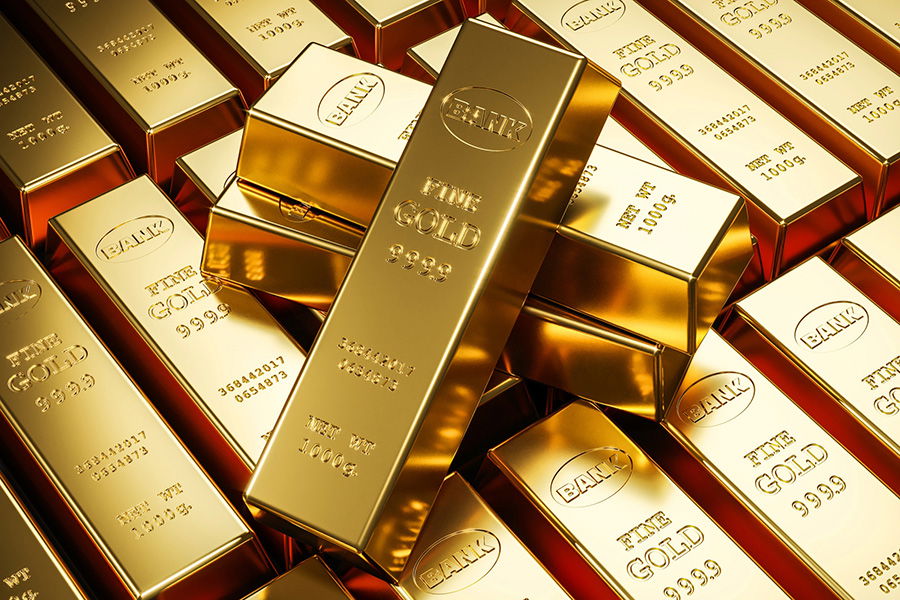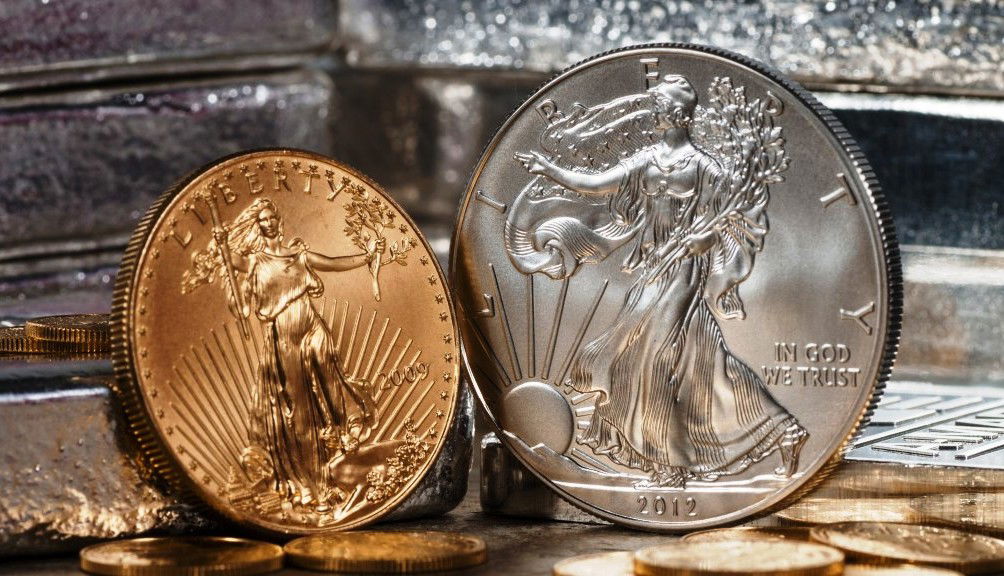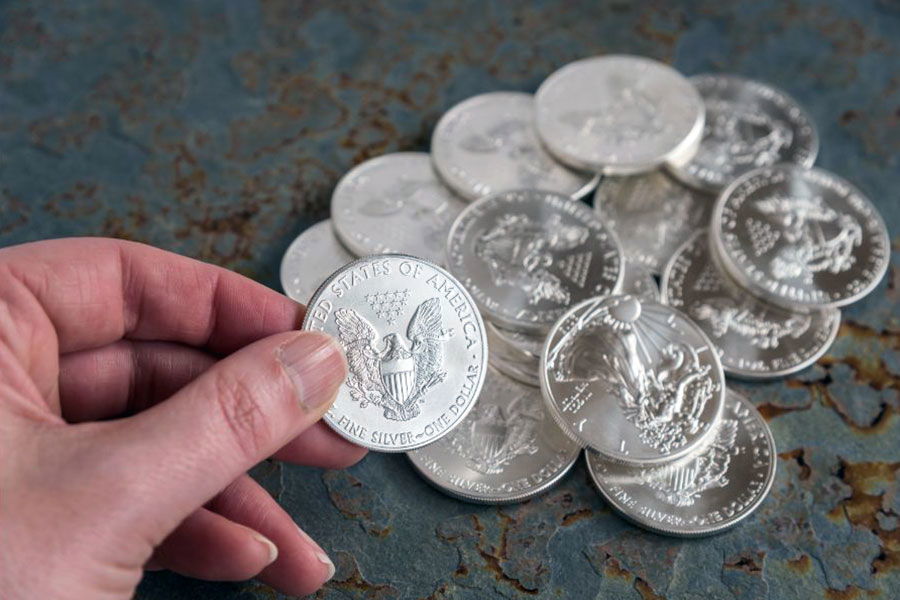Gold and silver have been trusted stores of value for centuries, but they don’t serve the same purpose in a portfolio.
Gold is known for stability and wealth preservation, especially during inflation or market turmoil. Silver, on the other hand, is more affordable and tied to industrial demand, giving it higher growth potential but also more price swings.

Deciding between gold and silver isn’t about which is “better” overall—it’s about which aligns with your financial goals. If you want stability, gold is often the safer choice. If you’re looking for growth opportunities and accessibility, silver may be the better fit.
Key Takeaways
- Gold is best suited for preserving wealth and adding stability during inflation or market volatility.
- Silver’s lower price and industrial demand create more room for growth but also higher price swings.
- The right choice depends on your goals—long-term security, growth potential, or a mix of both.
Gold vs. Silver: Which Is Better for Investors?
Gold and silver play different roles in an investment portfolio, and the “better” choice depends on your goals.
Gold is considered a classic safe-haven asset. Its value tends to hold steady during recessions, inflation, or market sell-offs, which makes it appealing for investors who want long-term stability. With low volatility and a strong history as a store of wealth, gold is often the go-to for preserving purchasing power over time.
Silver offers a different appeal. Because it’s heavily used in industries like electronics, solar panels, and renewable energy, its price is more sensitive to shifts in economic growth. That industrial demand creates higher volatility but also greater potential for price gains.
Silver is also more affordable, making it accessible for new investors or those looking for growth opportunities alongside gold’s stability.
Gold vs. Silver at a Glance
| Feature | Gold | Silver |
|---|---|---|
| Primary Role | Wealth preservation, safe-haven asset | Industrial demand + investment growth |
| Volatility | Lower, more stable | Higher, more price swings |
| Affordability | Higher entry cost | Lower entry cost, more accessible |
| Industrial Use | Limited | Extensive (technology, solar, energy) |
| Best For | Long-term stability and wealth protection | Growth potential and affordability |
How Gold and Silver Perform in Different Economies
Gold and silver respond to economic changes in very different ways, which is why each metal fits distinct investment goals.
Gold tends to rise during uncertainty. When inflation is high, currencies weaken, or markets fall, investors often move money into gold as a safe store of value. Its price history shows resilience, making it a reliable option for those who prioritize stability and wealth preservation.
Silver, however, behaves more like a growth asset. Because it’s widely used in industries such as electronics, solar energy, and manufacturing, silver prices fluctuate with economic activity. During downturns, reduced industrial demand can push prices lower. But in times of strong growth, industrial demand can drive silver prices sharply higher—giving it more upside potential than gold.
Long-Term Returns of Gold and Silver
Over time, both metals have offered moderate returns, but inflation has reduced their real growth. From 1925 to 2020, gold averaged a 4.87% annual return, while silver averaged 3.46%. With inflation at 2.9% over the same period, the gains were less dramatic in real terms.
Gold has historically outperformed silver in inflationary periods, cementing its role as a hedge and safe-haven asset. Silver’s returns are more dependent on industrial demand, which can pull prices down during slowdowns but drive strong rebounds when growth in sectors like technology and renewable energy accelerates.
What the Gold-to-Silver Ratio Tells Investors
The gold-to-silver ratio shows how many ounces of silver it takes to buy one ounce of gold. Investors use it as a quick way to compare the relative value of the two metals.
Historically, the ratio has averaged around 50–60. When the number is much higher, silver may be undervalued compared to gold. A lower ratio can suggest the opposite. For example, if the ratio climbs to 80 or 90, some investors see it as an opportunity to buy silver at a discount.
This ratio isn’t a guarantee of future performance, but it can be a useful tool for timing purchases and deciding which metal offers better value in the current market. Combining the ratio with your personal goals—whether stability or growth—can help guide smarter investment choices.
Ways to Invest in Gold and Silver
There are several ways to add gold and silver to your portfolio. Each option has its strengths and trade-offs, so the right choice depends on your goals and tolerance for risk.
Physical Bullion
Buying gold or silver coins and bars gives you direct ownership of the metal. It’s a tangible investment that many people trust for long-term security. The trade-off is higher costs: storage and insurance can add up, and dealer premiums raise the purchase price. Even with these expenses, many investors value the peace of mind that comes from holding physical bullion.
Precious Metals ETFs and Mutual Funds
Exchange-traded funds (ETFs) and mutual funds let you invest in gold or silver without worrying about storage. These funds trade like stocks, which makes them easy to buy or sell quickly. Costs are generally lower than owning physical metals, though management fees can trim returns. Popular options include SPDR Gold Shares (GLD) and iShares Silver Trust (SLV).
Gold and Silver Mining Stocks
Shares of mining companies offer exposure that can outperform the metals themselves when prices rise. That’s because stock values reflect both the metal price and the company’s performance. On the flip side, mining stocks carry added risks, such as operational setbacks or market swings. Some companies also pay dividends, giving investors a potential income stream.
Diversification Benefits
Gold and silver often move differently than stocks and bonds, making them useful for reducing portfolio risk. When equities drop, precious metals may hold steady or even climb, providing balance during market volatility. Adding them to your mix can help protect wealth and smooth out returns.
Choosing Between Gold and Silver Based on Your Goals
Investing in precious metals comes down to what you want your money to do. Gold and silver serve different purposes, so your priorities should guide the choice.
Gold for Stability and Wealth Preservation
Gold is the better fit for risk-averse investors who want long-term security. Its price tends to hold steady during inflation, recessions, or market volatility, making it a dependable way to preserve wealth over time. For those focused on protecting purchasing power, gold is often the preferred option.
Silver for Growth and Affordability
Silver carries more price movement but also greater upside potential. Because it’s heavily used in industries such as technology and renewable energy, its value can climb quickly when demand rises. Its lower cost per ounce also makes silver more accessible for new investors or those who want to start small while still seeking growth opportunities.
By aligning your goals with the unique strengths of each metal, you can decide whether gold, silver, or a combination of both fits best within your broader investment strategy.
Beginner Tips for Investing in Gold and Silver
Starting with precious metals may feel like a big step, but it’s easier if you approach it with a clear plan. These tips will help you make smarter choices as you begin:
- Start small and diversify: Begin with a modest amount to get comfortable, and consider holding both gold and silver to balance stability with growth potential.
- Research dealers and market trends: Track factors like inflation and industrial demand. If buying physical bullion, stick to well-reviewed dealers with proper certifications.
- Know the costs and risks: Physical metals may require storage and insurance, while ETFs come with management fees. Prices can swing, so only invest what you can hold long term.
- Consider liquidity needs: ETFs and mining stocks are easier to sell quickly than coins or bars, which may take more time to convert to cash.
- Watch for scams: Counterfeit coins and bars are common traps. Avoid offers that seem unrealistically cheap and confirm authenticity before you buy.
- Set clear goals: Decide whether your focus is preserving wealth, hedging against inflation, or seeking growth. Your goals should drive your choice between gold, silver, or both.
By keeping these basics in mind, you can step into precious metals investing with more confidence and less risk.
Final Thoughts
Gold and silver each bring something valuable to a portfolio. Gold stands out as a safe choice for long-term wealth preservation, while silver offers affordability and growth potential tied to industrial demand.
The best option depends on your financial goals. Some investors favor gold for stability, others lean toward silver for upside, and many choose a mix of both.
If you’re unsure how to balance them, a financial advisor can help you decide what percentage makes sense for your situation. Precious metals are more than assets—they’re a way to protect your future and strengthen your overall investment strategy.
Frequently Asked Questions
How much gold or silver should I add to my portfolio?
There’s no single answer, but many financial experts suggest allocating 5% to 10% of your portfolio to precious metals. The exact percentage depends on your risk tolerance, time horizon, and whether you want more stability through gold or more growth potential through silver.
How do I know if gold or silver is overpriced?
You can compare current prices to long-term historical averages, inflation rates, and market demand. If prices are well above their typical range without strong economic factors to support the increase, the metal may be overpriced. Many investors also watch the gold-to-silver ratio as a guide to relative value.
Can I include gold and silver in my retirement account?
Yes. Through a self-directed IRA, often called a precious metals IRA, you can hold approved gold and silver bullion or coins. The metals must meet IRS purity standards and be stored in an approved depository, not at home.
Are gold and silver good options during deflation?
Gold often holds its value during deflation, while silver may see weaker demand because of its industrial uses. If prices in the economy fall, silver’s role in manufacturing and technology can weigh on its performance. Gold, however, tends to remain steady as a store of wealth.
Can gold and silver protect against currency devaluation?
Yes. Both metals are widely seen as hedges against a falling currency. When paper money loses purchasing power due to inflation or monetary policy, gold and silver often rise in value, helping investors preserve their wealth.




